Common electronic component identification method inventory
First, the resistor. In electronic circuits, a resistor is typically represented by the letter "R" followed by a number, such as R13, which refers to a resistor numbered 13. The primary functions of a resistor in a circuit include shunting, current limiting, voltage division, biasing, filtering (when combined with capacitors), and impedance matching.
Resistors are essential components that control the flow of electric current. Their values are measured in ohms (Ω), with common units being kilohms (kΩ) and megohms (MΩ). For example, 1 MΩ equals 1000 kΩ or 1,000,000 Ω. There are several methods for identifying resistor values, including direct labeling, color coding, and numerical marking.
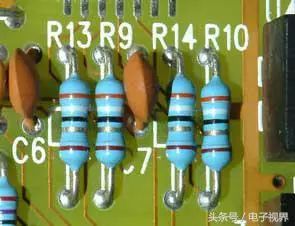
Resistor symbol
The most commonly used method is the color band system. Resistors with three or four color bands have the first band representing the first digit, the second band the second digit, the third band indicating the multiplier, and the fourth band showing the tolerance. For instance, a resistor with red, black, red, and gold bands has a resistance of 2000 Ω with a ±5% tolerance.
For small surface-mount resistors, the digital standard method is often used. For example, "103" stands for 10,000 Ω (or 10 kΩ). This method is particularly useful for compact designs where space is limited.
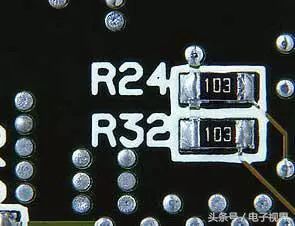
Chip resistor identification
When reading color-coded resistors, it's important to remember that the gold or silver band usually indicates the tolerance and is not the first band. Additionally, if there's any uncertainty about the order, you can use the spacing between the bands or refer to standard production values to determine the correct sequence.
Second, the capacitor. A capacitor is generally denoted by the letter "C" followed by a number, such as C223. It consists of two metal plates separated by an insulating material. Capacitors block DC while allowing AC to pass through, making them vital in filtering, coupling, and energy storage applications.
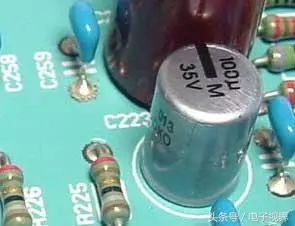
Capacitor on the board
Capacitance is measured in farads (F), with smaller units like microfarads (μF), nanofarads (nF), and picofarads (pF) commonly used. The value of a capacitor is either directly labeled or represented numerically. For example, a ceramic capacitor labeled "104 J" has a capacitance of 0.1 μF with a ±5% tolerance.
Capacitors can fail due to various reasons, including open circuits from corrosion, desoldering, leakage, or breakdown. Identifying these issues during troubleshooting helps in replacing faulty components effectively.
Third, the crystal diode. Diodes are represented by the letter "D" followed by a number, such as D7. They exhibit unidirectional conductivity, meaning they allow current to flow in one direction but block it in the opposite direction. This property makes them ideal for rectification, voltage regulation, and signal processing.
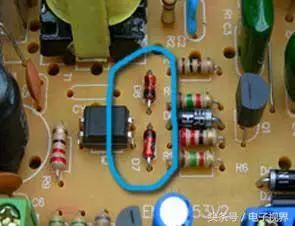
Diode representation in circuits
Diodes are widely used in power supplies, signal detection, and protection circuits. They come in various types, including rectifier diodes, Zener diodes, Schottky diodes, and light-emitting diodes (LEDs). Each type has specific characteristics suited for different applications.
Fourth, the inductor. Inductors are marked with the letter "L" followed by a number, such as L3. They store energy in a magnetic field when current flows through them and oppose changes in current. This makes them useful in filtering, tuning, and energy storage circuits.
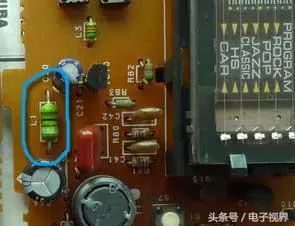
Inductor on the board
Inductors are typically made by winding insulated wire around a core. Their unit of measurement is the henry (H), with smaller units like millihenrys (mH) and microhenrys (μH) frequently used. Color coding is also applied to inductors, similar to resistors, to indicate their value and tolerance.
Finally, the transistor. Transistors are commonly denoted by the letter "Q" followed by a number, such as Q1. They are three-terminal devices capable of amplifying signals or acting as switches. Transistors come in two main types: NPN and PNP, each with distinct operating characteristics.
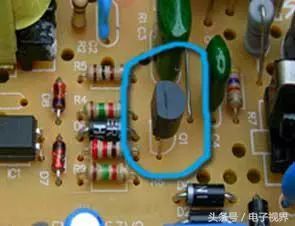
Transistor on the board
Transistors are fundamental in amplification, switching, and signal processing circuits. They are used in everything from simple audio amplifiers to complex digital systems. Understanding how to identify and test transistors is crucial for effective circuit design and repair.
phone Charging cable,Usb Phone Data Cable Android,iphone charge data cable,Phone data cable adapter
DongGuan BoFan Technology Co.,Ltd. , https://www.ufriendcc.com